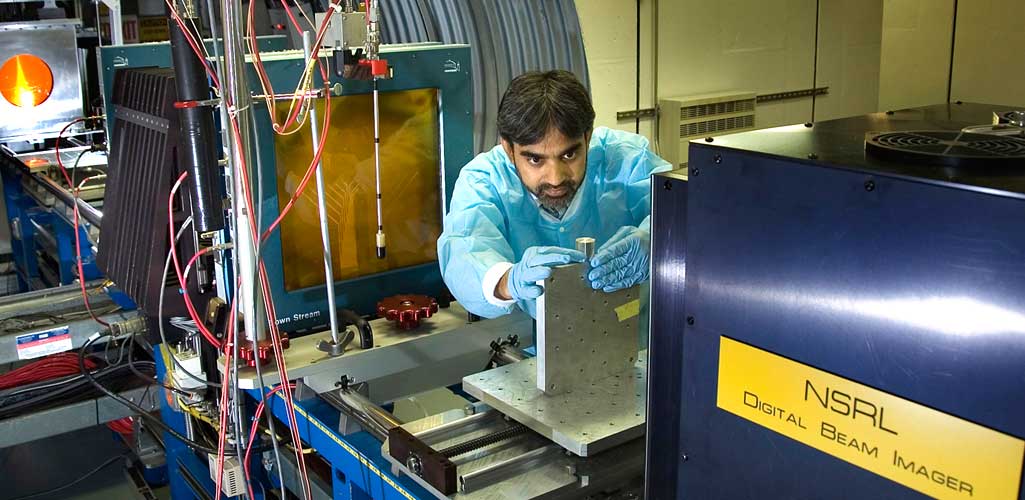NASA Space Radiation Laboratory
Using beams of heavy ions to simulate space radiation and study biological effects

The NASA Space Radiation Laboratory (NSRL) is a NASA-funded beam line and associated user-support building designed to carry out research on the effects of space radiation on biological systems, primarily, as well as on electronics and materials. NSRL delivers protons and heavy ions at space-relevant energies, serving a mostly NASA-supported community of researchers, with a small but growing group of non-NASA users testing electronics and investigating radiation therapy. NASA users who pass review by both NASA and Brookhaven Lab are granted beam time paid for by NASA. All others must pay on a full cost-recovery basis.
To see how you can get involved with this facility, contact Adam Rusek at (631) 344-5830.
Basic Research
The bulk of the research solicited and supported by NASA at the NASA Space Radiation Laboratory is singly focused on understanding the risks posed by space radiation to biological systems and on finding possible countermeasures. Those requesting beam time are generally recipients of NASA grants whose research has already been reviewed and approved by NASA. A Brookhaven-Lab-based committee reviews the beam-time proposals and recommends beam time based on feasibility and other institutional considerations. Basic research can be carried out at NSRL by non-NASA users who pay for beam time on a full cost-recovery basis.
Applied Research
Non-NASA users at the NSRL include radiation therapy researchers (funded by the National Cancer Institute, or NCI) and electronics testers. The facility can be used to test and calibrate new detectors, in particular, including those not necessarily intended for use in space. Users have also tested materials for radiation hardness, using doses equivalent to those encountered during decades-long missions in space. The beam energies at NSRL include those relevant for radiation therapy, so the facility has also been used to study the efficacy of various ion species that could be used for treating cancer.
Test Facilities and Expertise
NSRL can rapidly switch between various ion species and energy combinations on any given day, with energies ranging from 50 million electron volts (MeV) per nucleon (n) to 1500 MeV/n (or even higher for protons). These expanded capabilities, collectively known as a Galactic Cosmic Ray Simulator, simulate the range of particles astronauts and spacecraft might experience. NSRL staff can support a potential user with all aspects of setting up an experiment, including setup in the target room, providing equipment, hardware, cabling, data acquisition expertise, special beam-associated signals, dosimetry, and beam preparation.
Workforce Development
The NASA Space Radiation Laboratory provides an excellent training ground for radiation biologists, radiation therapy physicists, and technicians and test engineers. Undergraduate, graduate, and post-doctoral researchers regularly participate in experiments being undertaken by our scientific collaborators and user community. Until this past year (2016) NASA ran a summer school for the purpose of training graduate and postdoc level students in the field of radiation biology at NSRL with many hours of hands-on experience in the target room.



